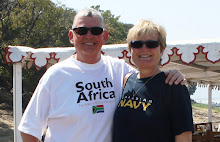 |
| The good ship "Lima" |
Other than
a moderate swarm of bees that had taken up residence on the underside of one of
the sun loungers, we had arrived in Manaus unscathed from a profusion of insect
visitors on our 900 mile cruise up the Amazon River. The interlopers generally came by night and it
was imperative to leave veranda lights off during the evening hours to avoid a
deluge of exotica clinging to the windowpanes in the morning.
 |
Stilted houses highlight the Amazon's
low water levels in November |
The
manufacturing, oil refining and fishing centre of Manaus has an intriguing
history - colonized by the Portuguese in the 1600s, its heyday came when the
commercial value of latex was discovered and the era of the rubber barons
was born. Opulent buildings were constructed with
materials imported from the far reaches of the empires of the various colonial
powers who arrived in force to take advantage of the economic boom.
Unfortunately the rubber resource was not well managed - trees were planted too close together and the plantations eventually floundered. Seedlings were smuggled by the British and taken to Kew Gardens in London and eventually transplanted in what is now Singapore and Malaysia where labour and transportation costs
were more attractive. We have it on good authority that the 11 original descendant trees stand in Singapore's Botanical Gardens.
After a period of excess and opulence Manaus’s good times were coming to an end and the eventual discovery of synthetic rubber provided
the final nail in its coffin. The rubber boom was over.
 |
| Crumbling facades of a glorious past |
The fine
old buildings of Manaus’s boom times are still evident, notably the famous Opera House. Many though have
been reduced to crumbling facades, some softened by creeping ivy that over the
years has used rusting window and door decorations as support.
Wandering through Manaus's main streets we negotiated the disintegrating infrastructure of uneven
sidewalks and gaping potholes. Street vendors occupied either side of the
narrow roadways selling everything from fast food to racy underwear while
loud music bellowed, horns honked and vehicles belched their emissions.
 |
| Busy street market |
In the midst of it all stood the
cathedral. Nearby, a massive paper mache Father
Christmas occupied a street corner. Seasonal music blasted from within its hollow structure, competing with
all the street noise. The humidity was palpable despite a healthy breeze and overcast skies. Santa's heavy red suit and its fur trimmings felt completely out of place.
 |
Fruit drink stand selling
highly caffeinated Guarana |
We
negotiated the busy streets, darting between cars, buses and scooters, eventually taking
refuge in a vestige from our youth when we lived in the UK - a C+A store. The store’s air
conditioning provided welcome relief while our eyebrows raised at the sight
of more risque underwear ... there did seem to be a high proportion of undergarments in the store compared to other merchandise on sale!
Tourist
police armed with serious weaponry watched the proceedings while military and
civil police watched them. All this was
being observed by a kettle of vultures hovering overhead, circling in search of fish abandoned on the shoreline by receding water levels. The rainy season was about to begin and the
stilted buildings and floating docks would soon be put to the test.
No matter,
we had plenty of time another day to visit the opulent Opera House with its
marble edifice, intricate paintings and chandeliers of Murano glass, all
echoing Manaus’s glorious past.






No comments:
Post a Comment